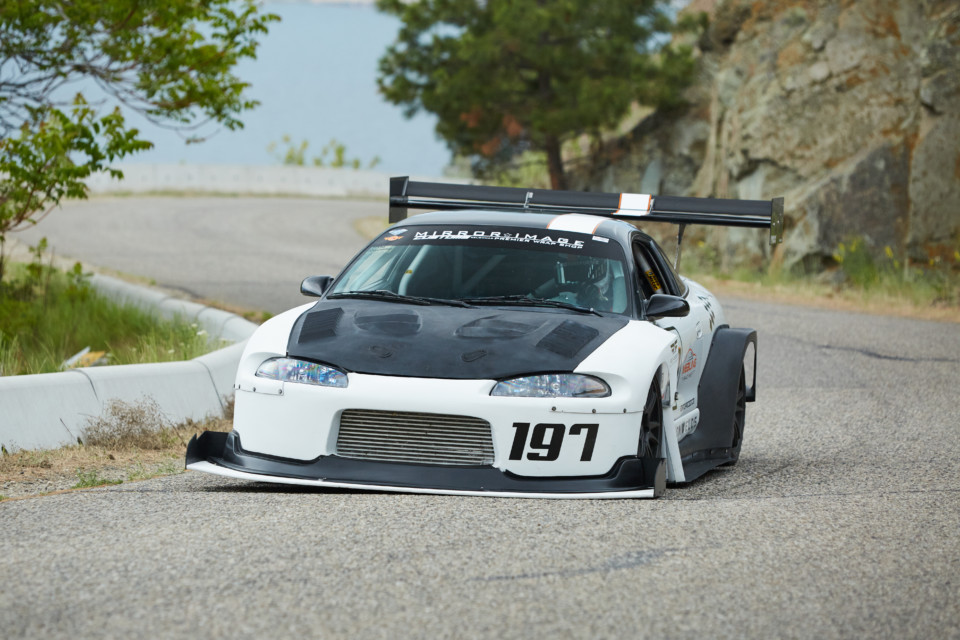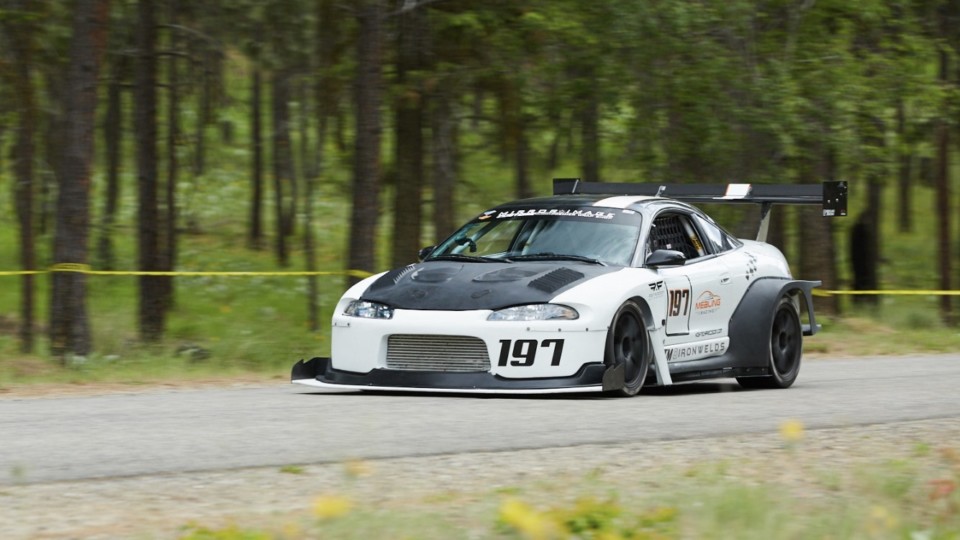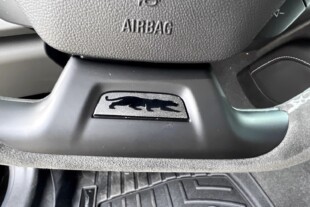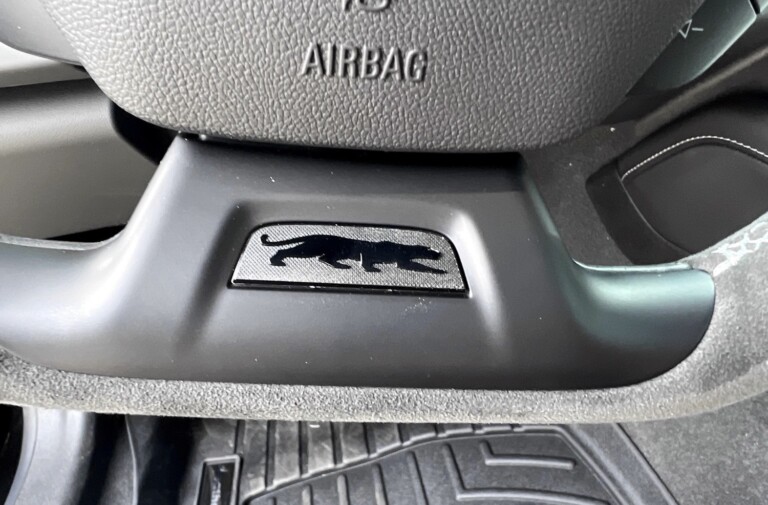Garrett Mealing’s had a long and storied history with this 1995 Mitsubishi Eclipse, or as it’s often called, the Eagle Talon. When he purchased the car fifteen years ago, it served mainly as his daily driver, but soon he went the standard DSM route of turning up the boost and taking it to the drag strip. With a little work, he found his way into the 11-second range, and he was content.
Ten years later, a rallying friend introduced him to the sport of hillclimbing, where he thought his unassuming Eclipse might have the potential to punch well above its weight. After watching one event, he was immediately hooked. With the help of his father and Four Function Autosport, he set to turning the dragster into a hillclimber.

Photo credit: Kyle Thomson
To achieve speed on these types of roads, Mealing had to improve the mechanical grip with 285-section BF Goodrich R1S tires and KW Variant 3 coilovers. For a public road filled with cambers, cracks, and crowns, the Variant 3s, which are custom valved by Robispec, offer the right blend of supple and supportive.

Photo credit: Kyle Thomson
Wing-Clad and Lightweight
Keeping the car relatively flat and low helps make use of its intriguing aero kit. It employs a 78″ APRGT1000 rear wing, the aforementioned splitter, and a vented hood from a manga comic, and some vented fender flares. These items, sourced from WTAC aerodynamic guru Andrew Brilliant, all help the car sit securely at speed.
With so many hairpins and sheer cliffs along his hillclimbs, Mealing needs all the safety and reassurance he can find. A tubular front subframe improves chassis rigidity and steering feel—as does the detailed roll cage. The cage, made from DOM tubing, is only a few bars away from being an FIA-spec WRC cage since the local hillclimbs don’t require as extensive a design. Weight is everything after all, and paring down the car to the minimum required means it weighs in at just 2,900 pounds wet.
Still a Dragster
For something so svelte, it sports a powerful motor that might be more appropriate for a drag racer. The engine is a 2.0-liter 4G63 using a stock crank and Manley forged internals. The mildly ported head utilizes of a set of Brian Crower 280° camshafts, stainless valves, Brian Crower springs, and titanium retainers. The turbocharger, a Forced Performance 3582HTA provides the pressurized air and twin fuel pumps satisfy its thirst via 1250cc injectors.
Fed by E85, the built engine spits out 565 horsepower and 475 lb-ft throughout the last third of rev range. Though its narrow powerband causes some bogging in some hairpins, once above 4,500 rpm, the turbo comes on “like a light switch” and fires it up the mountain. The short straights are quickly gobbled Eclipse, and slower bends aren’t much of an issue, either. Thanks to a locked center differential, open diffs at both axles, and good tires, it puts all that power down in first-gear corners without too much wheelspin—most of the time.
The Knox Mountain hillclimb was different, however. “The pavement is fifty years old, and the road is really only used once a year, so there’s no rubber laid down,” Mealing adds. That lack of grip was startling and unnerving, especially since time on the hill is quite limited. “I locked the fronts up completely in the second hairpin, which sort of threw the rest of the lap,” he concedes. Still, his comfort and familiarity with the car eventually helped him to win his class that day.
The Eclipse’s confidence-inspiring setup allowed Mealing to push without taking excessive risks, which is a nice thing to have with so many cliffs to contend with. Aided by the reassuring combination of an accurate front end, dependable traction, and a stable chassis, he took 2.7 seconds off his best time from the previous year and secured the class win—all without tumbling down a hillside. If all goes to plan and it returns next year with a dogbox, tire warmers, and a 2.3-liter stroker kit, we’ll be able to see the full potential of an Eclipse in this unconventional setting.






















